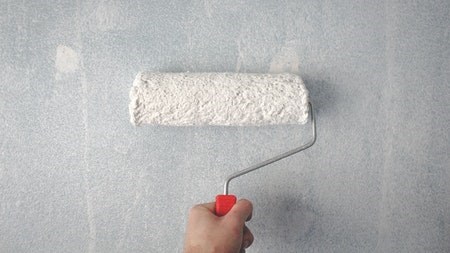Every homebuyer wants to add their personal touch to their property and turn their new house into a home. A great way to do this at a reasonably low cost is by giving the property a fresh coat of paint. But, to make their lives easier, experts recommend that buyers paint the home before moving in.
“A new coat of paint will make the home seem cleaner, updated and more your own. However, to save yourself some hassle, paint the home a few days before you move all your furniture and boxes into the home. Not only will this save you from inhaling paint fumes, but it will also cut down the amount of labour and time required to get the job done,” recommends Regional Director and CEO of RE/MAX of Southern Africa, Adrian Goslett.
Below, RE/MAX of Southern Africa describes four reasons to paint before you move in:
1. You don’t need to play Tetris with the boxes
It is far less physically challenging – and less stressful – to paint the interior of a home if there is nothing in it. If furniture and boxes have already been moved in, it makes the entire process far more cumbersome, involving heavy maneuvering to get to certain places in the home. If the room is empty, it will be easier to move around and place the step ladder in the right spot to reach those out-of-the-way sections.
2. Why move twice when you can move once?
If homeowners have already moved in, they will have to move the furniture away from the walls before they can start painting. Moving the furniture around and covering it takes the time that could be spent on the actual painting. If homeowners decide to make use of professional painting contractors, it can save them in costs. With no furniture in the home, the painters will be able to move from one room to the next much faster, which will cut down on time spent on the job. Less time spent on the job will mean lower labour costs.
3. Avoid creating Jackson Pollock furniture
If there is no furniture in the home, it can’t get ruined. Even if the new homeowner or a painting contractor is meticulous about ensuring that all furniture is covered, there is still the chance that paint could spill, or paint flecks could find their way onto the furniture.
4. Figure out a colour palette
Homeowners who are undecided about their colour palette should test several shades of the colour selections on a wall in the room they are going to be painting. The painted area should be allowed to dry for 24 hours before viewing it, as paint often looks different after it has dried. View the colour swatches in the morning, noon, and evening, as the colours will also appear slightly different depending on the time of day. This will give the homeowner the chance to compare the shades to see which one is best for the space. If the homeowner has not yet bought any of their décor items for their new home, painting the home will give them a specific colour palette from which to work which could make the process of decorating far easier.
“Painting a home is an excellent way to transform it and reflect the new owner’s individual style. However, neutral shades will always have the broadest appeal if the homeowner ever decides to sell. When a homeowner reaches that point, it is best to consult with a local real estate advisor who can provide objective advice on how the home should be updated to give it the best chance of selling,” Goslett concludes.
By RE/MAX




